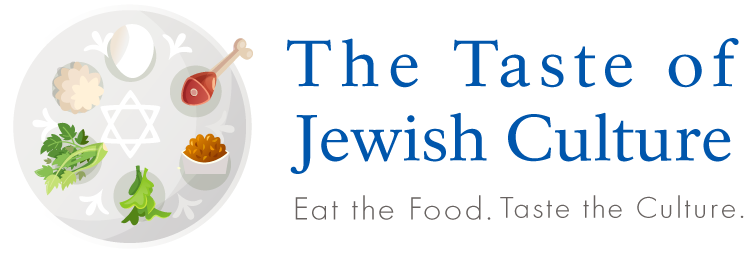Before I even get into the discussion explaining what kitniyot is, I need to express a caveat. The very topic I am about to explore is one that often leads to heated discussions and debate full of emotion and passion. I will not be making suggestions about what any person should or should not do or believe, nor about the relative merits of various opinions. As usual, I will be looking at this custom from a cultural perspective, exploring its connections to Jewish history and culture.
So, what is kitniyot? At its barest essence, it is a Hebrew word that simply translates as “legumes,” i.e. beans, peas, lentils and the like. However, clearly that alone is not enough to get someone hot under the collar. Kitniyot (or kitniyos in Ashkenazi pronunciation) is a class of foods, including but not limited to legumes, that have been forbidden for consumption by Ashkenazi Jews on Passover. (Hence, my posting this now.) In addition to legumes, it also includes rice, corn, buckwheat, and a host of other ingredients. These are not considered Biblically forbidden foods, as with actual chametz (leavened grain), but are forbidden by “tradition” on top of the already prohibited chametz.
Why Are Kitniyot Such a Big Deal?
The origins of this tradition are somewhat mysterious. The earliest mentions we have come from medieval Ashkenaz (the border region between western Germany — the Rhineland — and northeastern France — Alsace, Lorraine, and Champagne). And while that is an old tradition, it is not nearly as old as the laws of not eating chametz (Biblical) and the interpretation of specifically what grains may become chametz (Talmudic).
Certainly, this is not the only food custom to develop at a later, post-Talmudic period. The tradition, for example, of Ashkenazi Jews only consuming meat from the front half of a cow, rather than “porging” the proscripted sciatic nerve, begins following the Black Death in Europe.(1)Gil Marks, Encyclopedia of Jewish Food Similarly, the separation between milk and meat foods has continued to develop even in our own times, with some adding requirements on using separate ovens, for example.
So complaints about one food-related tradition that goes back at least to around a thousand years ago should not amount to… ahem… a whole hill of beans. (Sorry.) Four main things, as I see it, make this tradition into such a hotly debated topic.
First, the reason and source for the tradition are unclear. There are a number of plausible theories on the reasoning behind the rule, but we have no source that states the reason explicitly, and so even from learned sources, these amount to little more than speculation. (I am not going to summarize all of the details of this debate about halacha — Jewish religious law — since others have done a much better job than I could do. If these details interest you, I recommend this article or this one.)
Second, earlier sources very clearly state that such foods (rice and beans) are perfectly acceptable for consumption on Passover. In conjunction, a number of significant rabbinic opinions within the Ashkenaz region discounted the tradition, some referring to it as nonsense, or even potentially bad due to imposing hardships on people. (Again, these sources may be found in the above articles.) It is for this reason that I have repeatedly used the word “tradition” rather than “custom.” Custom, or minhag in Hebrew, has a serious weight in halacha. They are considered almost as powerful as actual laws or rules. However, not every practice that many Jews have started doing is considered to be a true minhag, according to halacha. Whether or not kitniyot is one is continually argued about, and one of the core issues at play here.
Third, Passover food restricitons already remove a staple out of the diet (bread), barely replacing it with an inferior substitute (unleavened bread, i.e. matzah). What this added restriction on kitniyot does is remove a host of other potential staples as well. While I do not agree wholeheartedly with the sentiment, it is the reason why many Ashkenazim complain that on Pesach “there is nothing to eat.” Obviously, strenuously constricting people’s eating options for an entire week is sure to engender intense emotional reactions.
Last, the kitniyot tradition divides Jew from Jew. While most of our food laws separate Jews from their non-Jewish neighbors, this one does the same between different groups of Jews. And while, sure, there are other food-related distincitons between Ashkenazim and Sephardim/Mizrachim/others, this one is more significant. It is not a big deal when two people have a different opinion on eating a filet mignon. (In fact, many Ashkenazi Jews have no problem eating meat from the rear half of the animal, it is just that their own butchers do not prepare or sell it.) But with kitniyot, one needs to find out the ingredients in a given dish or food product. If Ashkenazim and other Jews dine together on Passover, one will almost certainly need to make certain accomodations for the other. (Interestingly, by the way, there are further distinctions. Many Moroccan Jews avoid rice on the holiday, but still eat other forms of kitniyot.)
Hence, all of the consternation around this topic.
Kitniyot Today

The eagle-eyed among you will have picked up on a contradiction in what I’ve written. One of the core foods that is widely agreed upon as a type of kitniyot is corn. But that, too, is a New World food. How it is that corn has become widely “accepted as prohibited” while potatoes were not is anyone’s guess. Many other ingredients are permitted by some and prohibited by others. Search lists of kitniyot online and you will find numerous differences between them. But all of these inconsistencies further fuel the disdain that some hold for this tradition.
Two other foods were debated within the twentieth century, to opposite results. Coffee is made from a bean, and thus was questionable at first. But led by Jewish marketer Joseph Jacobs, on behalf of his client Maxwell House coffee, rabbinic authorities were consulted who proclaimed that coffee is more berrylike than beanlike, and thus was permissible.(2)Roger Horowitz, Kosher USA: How Coke Became Kosher and Other Tales of Modern Food On the flip side, peanut oil went from being widely accepted and used by American Ashkenazim throughout much of the twentieth century, to being almost universally forbidden in the final decades of the century. The erosion of its acceptance began in the late 1970s, but the Orthodox Union (the largest kosher certifying agency) still listed kosher for Passover (K for P) peanut oils until 2001.(3)Zev Eleff, “The Search for Religious Authenticity and the Case of Passover Peanut Oil,” in Gross, Myers and Rosenblum Feasting and Fasting: The History and Ethics of Jewish Food
When quinoa first started growing in recognition and popularity in the U.S., there were debates about its kitniyot status as well. But those were quickly nipped in the bud before they could gain any steam.
These developments, I think, highlight a growing shift within Orthodox Judaism. There has been an increase in stringencies and a suppression of questions or those who find ways to permit things. This has been happening for some time, but I think it certainly sped up during the second half of the last century. And so, in this food tradition (and its changes) we see one aspect of contemporary jewish culture reflected.
But there has been an interesting development in the other direction as well, fueled by a different shift in the second half of the twentieth century. With the establishment of the State of Israel in 1948, the Jewish people have seen true kibbutz galuyot — the Biblically prophesied ingathering of the exiles. Jews from all over the globe have moved to Israel and built new lives there. And as I’ve written previously, Ashkenazi Jews are a minority in Israel.
So ironically, a place that is a mecca for kosher food afficianados throughout the year becomes a much more complicated place for American Ashkenazi tourists when they visit over Passover. In the U.S., one needs to look for K for P food products that actually have kitniyot in them. In Israel, the opposite is true, where tons of foods contain kitniyot, and most restaurants also have kitniyot on their menus. Then factor in the increase in families of mixed Jewish backgrounds, as well as the numerous friendships that we all have with Jews from otehr communities, and Passover eating becomes a minefield for kitniyot observers.
There has, thus, been a growing movement pushing for the abolishment of this tradition for Jews in Israel. The impetus has come from rabbis who are either on the fringes of Orthodoxy or from the Conservative stream, but has been picked up and supported by a growing grassroots movement. The separations that this tradition created between Ashkenazi Jews and the rest of the Jewish world were bad, but perhaps palatable in a place where Ashkenazim were the majority culture. But the divisions that this tradition drives between Jews who are trying to form a unified nation in Israel are seen by many as contrary to the values of our people.
Many an Israeli Jew of Ashkenazi descent, each year, makes the casual declaration, “I’ve decided to eat kitniyot this year on Pesach.” How many or what percentage is difficult to ascertain, and I don’t think anyone has actually studied it formally yet. At the same time, there are many others who push back against this trend, vauing tradition for tradition’s sake. But undoubtedly, this growing movement reflects a situation in world Jewry that did not exist even 75 years ago. What the end result will be, is anyone’s guess.
On a personal note, people frequently ask me if I eat kitniyot on Pesach. I don’t, but not because I believe strongly in this tradition. I simply feel I don’t need to eat these foods. I could go weeks on a regular basis without eating any rice, corn, or beans. They simply are not a massive part of my diet. And part of my personal mission has always been to broaden people’s minds about what Kosher for Passover (even with the kitniyot restriction) can mean. At my numerous seders over the years I have served (among other things) thai food, beanless chili, ceviche, and many many foods that are made using quinoa. There are tons of foods one can eat on this holiday, and loading up on protein and vegetables instead of carbs for a week can be a good thing too! That being said, I also don’t go crazy about the tradition. If I buy a product and then discover it has kitniyot in it, I may eat it anyway. I won’t order a kitniyot dish at a restaurant, but if I accidentally end up with something, I might be fine with it.
Whatever your personal traditions, I hope that you find ways to truly embrace your freedom during the upcoming holiday!
Found This Interesting? Pass it Along!
Footnotes
| ↑1 | Gil Marks, Encyclopedia of Jewish Food |
|---|---|
| ↑2 | Roger Horowitz, Kosher USA: How Coke Became Kosher and Other Tales of Modern Food |
| ↑3 | Zev Eleff, “The Search for Religious Authenticity and the Case of Passover Peanut Oil,” in Gross, Myers and Rosenblum Feasting and Fasting: The History and Ethics of Jewish Food |






